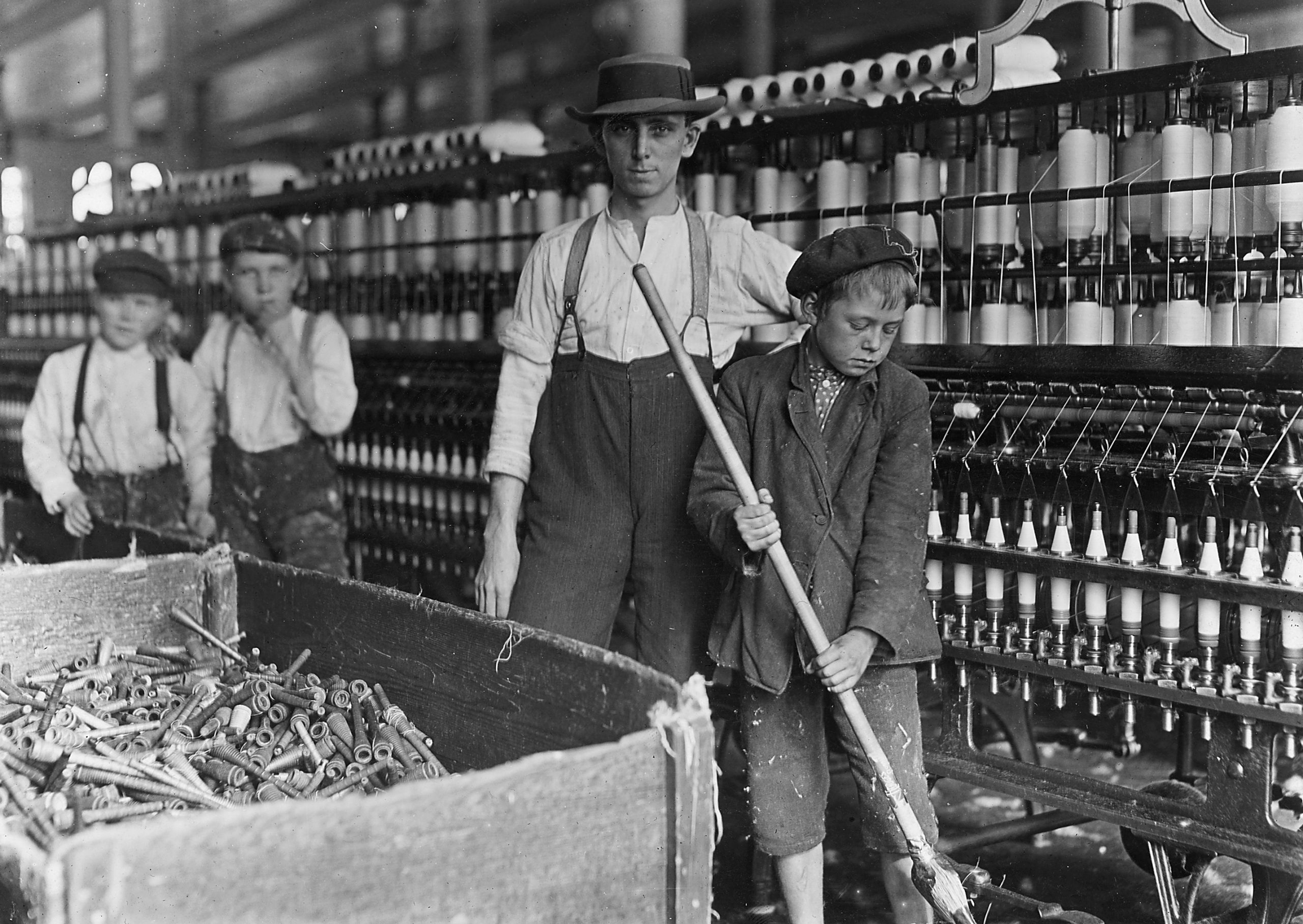Emerging technologies are disrupting product design life cycles
Jonathan Follett on creative class workers, product life cycles, and enhancing company-customer relationships.
 Doffer boys (source: U.S. National Archives and Records Administration)
Doffer boys (source: U.S. National Archives and Records Administration)
I recently sat down with Jonathan Follett, principal of Involution Studios and editor and author of the recently released O’Reilly book Designing for Emerging Technologies. We talked about the ways in which emerging technologies are disrupting the product life cycle and considerations for companies looking at new ways of approaching product design and development.
The age of the creative class
Follett noted the cyclical nature of the design life cycle, drawing parallels between today’s emerging technology and that which arose during the Industrial Revolution. He outlined a few ways we’re seeing technology disrupt the product design life cycle today:
When I talk about emerging technologies, sometimes I refer back to the second Industrial Revolution, where you had a whole bunch of emerging technologies of the time coming together. You had your automobile, your lightbulb, your electric power, your telephone all coming to the fore at the same time. That created the modern world we’re living in today.
When we’re talking about product design and new products coming to the fore today, we can see the same thing happening, whether you’re talking about the Internet of Things, or robotics, or synthetic biology and genomics, or any of those other exciting elements that are all mixing together. That’s one way. … [We’re] creating whole new lines of products that we’ve never even thought of.
…
The other way we’re seeing disruption in the product design life cycle is that we’re finding different ways to work together as creative class workers. What I mean by that is knowledge workers, scientists, designers, engineers. You’ve got all of the leverage of open source. You’ve got open source mechanical designs, open source CAD drawings, open source electrical designs that a product designer can leverage to create their new products. [We’re] doing what Isaac Newton said — he stood on the shoulders of giants; that way, he could see farther. We’re having an opportunity in real time to find a crowdsourced IP and bring it into a product design, and push the design out the door so much faster than before.
As a creative class, we’re finding new ways to work together that are not restricted to Industrial Age thinking. Open source and crowdsourcing are just two examples of that.
Sustainability and environmental impact
Follett, a 15-year design veteran, explained that a designer must think about the product’s entire life cycle, not just the early stages:
There are some interesting trends — one of which is this idea of being able to disassemble products. You’ve got these products with pieces that can be easily taken apart at the end of their life cycle. You’re actually thinking, if I’m using certain types of plastics or chips, how can I take these apart very quickly and get them in the recycling stream. It’s admitting to yourselves that people aren’t going to own your product forever.
Another aspect to that is the materials science that goes into making these products. Asking questions up front about whether these products are going to be biodegradable. What does the total carbon footprint look like for a product over the course of its entire existence?
Considerations for companies
New technologies are changing the way companies view product design and development. Follett noted the growing importance of the company-customer relationship and how the Internet of Things can facilitate a more intimate, long-term relationship:
What if products and the designers who made them had an ongoing dialogue with users — which is fully possible now if you consider connected products and the Internet of Things? Take my washer for instance. What if GE could push an update to my washer to improve the usage of water, electricity, etc., so it’s more efficient based on whatever the spin cycles are. At the same time, they would also monitor how I’m using the washer, so they could report back to me that it seems I’m a very wasteful person. [They could then] recommend that I download a water-throttling algorithm so I could control my water usage. [They could] see that I’m always using a full load, but I’m actually only putting in a tiny bit of clothing, which they could tell from the sensors.
That’s a long way of saying that the possibilities with the Internet of Things and connected devices and connected products are for having this ongoing relationship with the user. For companies looking to incorporate these technologies, I think it’s a worthwhile question to ask, how well do you know your users? How well do you know what they want, and how can you better facilitate that by leveraging these emerging technologies and being able to innovate continuously — not just to get a product into the hands of the consumer, but really to be involved with them over the course of the lifetime of that product.
You can listen to the entire interview in the player above, or through our O’Reilly SoundCloud stream.
